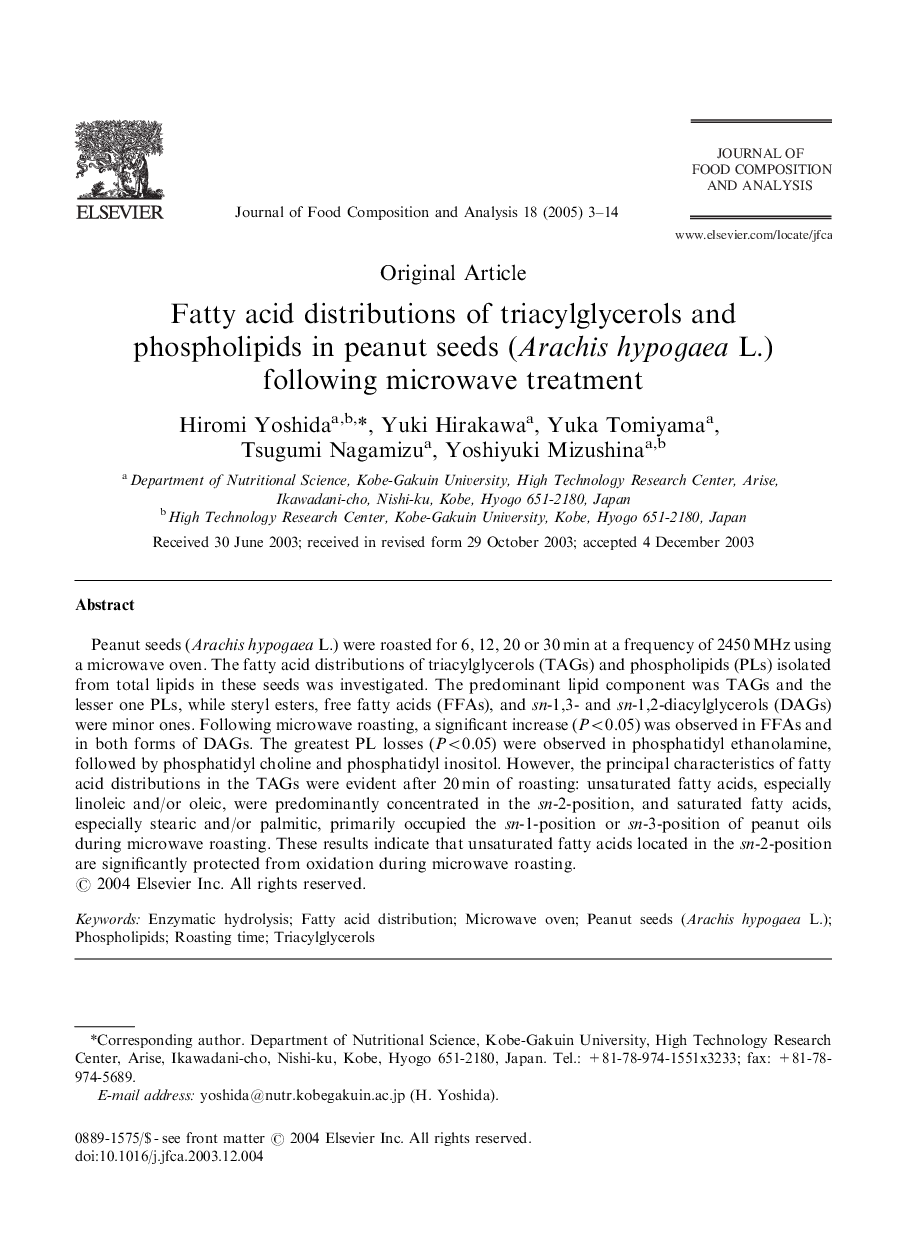| Article ID | Journal | Published Year | Pages | File Type |
|---|---|---|---|---|
| 10553060 | Journal of Food Composition and Analysis | 2005 | 12 Pages |
Abstract
Peanut seeds (Arachis hypogaea L.) were roasted for 6, 12, 20 or 30Â min at a frequency of 2450Â MHz using a microwave oven. The fatty acid distributions of triacylglycerols (TAGs) and phospholipids (PLs) isolated from total lipids in these seeds was investigated. The predominant lipid component was TAGs and the lesser one PLs, while steryl esters, free fatty acids (FFAs), and sn-1,3- and sn-1,2-diacylglycerols (DAGs) were minor ones. Following microwave roasting, a significant increase (P<0.05) was observed in FFAs and in both forms of DAGs. The greatest PL losses (P<0.05) were observed in phosphatidyl ethanolamine, followed by phosphatidyl choline and phosphatidyl inositol. However, the principal characteristics of fatty acid distributions in the TAGs were evident after 20Â min of roasting: unsaturated fatty acids, especially linoleic and/or oleic, were predominantly concentrated in the sn-2-position, and saturated fatty acids, especially stearic and/or palmitic, primarily occupied the sn-1-position or sn-3-position of peanut oils during microwave roasting. These results indicate that unsaturated fatty acids located in the sn-2-position are significantly protected from oxidation during microwave roasting.
Related Topics
Physical Sciences and Engineering
Chemistry
Analytical Chemistry
Authors
Hiromi Yoshida, Yuki Hirakawa, Yuka Tomiyama, Tsugumi Nagamizu, Yoshiyuki Mizushina,
